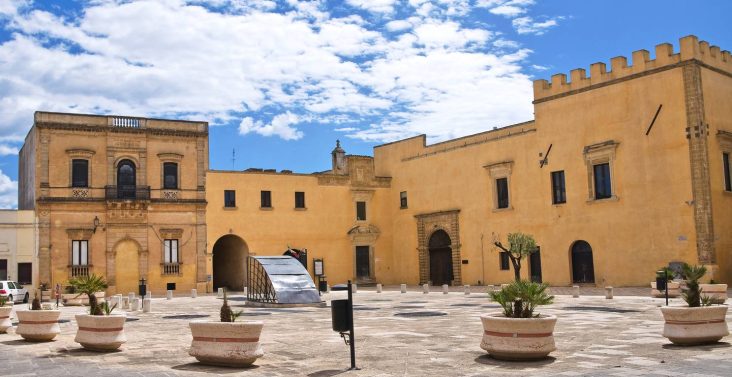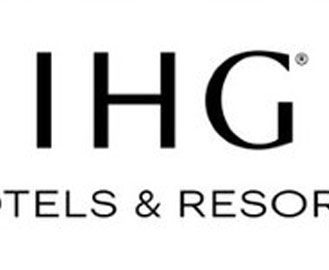The top 10: Where are they now?
The 1992 list was based on 1991 total sales. Most of the agencies who made the Top 50 then were focused on corporate travel. In fact, Liberty Travel was the only one in the top 10 primarily focused on leisure. At the time, most leisure travel was firmly in the hands of smaller agencies, who tended not to go after corporate accounts.
As noted in the introduction by then-Travel Weekly reporter Eric Lassiter, who compiled that first list, 1991 had been a tough year for the industry. But by the time the list was published in April 1992, most agencies reported that business had improved in the prior six months. Thanks to discounting, cruises remained a bright spot for leisure agencies, if not for cruise lines.
Here’s a look at the 1992 top 10 and where they are today.
1No. 1 on the list was New York-based American Express. The company’s travel activity dates back to 1915, when it announced it would offer American and Canadian clients tours as near as upstate New York and as far away as New Zealand.
By 1992, the company had more than 800 company-owned and representative agency locations in the U.S. and 1,700 around the world.
It was to hold the No. 1 position until being ousted by Expedia in 2010. (Upon hearing this news, Expedia’s then-CEO, Dara Khosrowshahi told Travel Weekly’s Arnie Weissmann that the elevation was “a wonderful thing, a great honor,” but he worried Amex might revive. “We don’t want to go back to No. 2 or 3 ever again.” Alas, it wasn’t Amex he should have worried about: Booking Holdings dislodged Expedia from the top spot this year.)
A spokesperson for Amex noted that Amex Travel today is much different than it was in 1992. Back then, agency operations were grouped under the Amex Travel Services Group, which included business and consumer travel. Today, those businesses are separate. Amex is now only a minority investor in corporate-focused American Express Global Business Travel, No. 3 on the 2022 Power list and a publicly traded company; it spun off in 2014 and became jointly owned by Amex and an investor group led by Certares, before going public.
American Express Travel, the leisure business, sits at No. 6 on today’s Power List. If its sales and those of Amex GBT were combined, they would amount to about $12 billion but would still be left in the dust by Expedia, at $72.4 billion, and Booking Holdings, at $76.6 billion.
2 No. 2 on 1992’s list was Carlson Travel Network in Minneapolis. Its U.S. business would merge with Wagonlit Travel in Europe to form Carlson Wagonlit Travel in 1994; in 2019, the company officially changed its name to CWT.
A healthy portion of what in 1992 was Carlson Travel Network was the result of the acquisition of Ask Mr. Foster, a leisure agency founded in 1888. Wagons-Lits — literally, “sleeper cars” — also goes back more than 100 years, tracing its origins to an 1872 enterprise that added sleeping compartments to trains in Europe. The leisure portion of the business was divested in 2008 from the Carlson Cos. and was absorbed by the agency rollup that eventually became Internova Travel Group (which is also in the investment portfolio of Certares).
3 No. 3 Thomas Cook Travel was founded in the U.K. in 1841. In the U.S., it was headquartered in Cambridge, Mass. Its formation was the result of a 1989 partnership among Cook, Crimson Travel Service and Heritage Travel. The partnership was headed by David Paresky, who had founded Crimson and later, with his wife, Linda, purchased Heritage. Eventually, the Pareskys took complete control of the U.S. operations, ultimately selling the business to American Express in 1994.
4 No. 4 in 1992 was corporate agency Rosenbluth Travel in Philadelphia, which was then celebrating its 100th anniversary. In 2003, American Express would purchase the company (then known as Rosenbluth International). A separate, leisure-focused company, Rosenbluth Vacations, wasn’t part of the sale. It operates today but is not on the Power List.
5 USTravel in Rockville, Md., was No. 5 in 1992. It merged with IVI Business Travel International in 1995 to form BTI Americas. Three years later, seven of its executives executed a buyout with financing from WorldTravel International, parent company of Atlanta-based WorldTravel Partners.
BTI subsequently merged with WorldTravel Partners. In 2001, the company became WorldTravel BTI, then, in 2006, it combined with two other companies to form BCD Travel, which sits at No. 4 on Travel Weekly’s 2022 Power List.
6 Liberty Travel in Ramsey, N.J., was No. 6 on the list in 1992. It opened its first storefront in Times Square in 1951. In 2008, it was acquired by Australia-based Flight Centre Travel Group. Today, the U.S. arm of Flight Centre sits at No. 7 on the Power List, and Liberty is still in operation within the Flight Centre family.
7 No. 7 in 1992 was IVI Travel in Northbrook, Ill. IVI merged with 1992’s No. 5, USTravel, in 1995. After several permutations over the years, it would become a component of BCD Travel.
8 Maritz Travel in Fenton, Mo., was No. 8 in 1992. Carlson Wagonlit Travel purchased its corporate travel division in 2004. The deal did not include the meetings, events and incentive travel management portion of its business; Maritz Global Events is still in business, styling itself as an “experience design company.”
9 Coming in at No. 9 was Wagons-Lits Travel USA in Dayton, Ohio. Wagons-Lits USA was a subsidiary of Wagons-Lits Travel, a multinational agency based in Paris. According to CEO Gregg Bedell’s obituary, he and his partner would purchase Northwest Travel in 1994, which merged with Wagons-Lits Travel USA to become World Travel Partners — later BCD — in 1998. It is unclear how Wagons-Lits Travel USA was related to the group that would become CWT.
10 Rounding out the 1992 top 10 was the corporate agency Omega World Travel in Falls Church, Va., still owned by president and founder Gloria Bohan and sitting at No. 21 on the 2022 Power List.
If the comparison between 1992’s top agencies and the 2022 Power List speaks to anything, it’s the inevitability of change. In 1992, four of the top 10 could trace their roots back more than 100 years. In 2022, the top two are products of the Internet, a technology barely understood by consumers in 1992.
“It just shows that even though you’re one of the largest today, in the next 30 years you’re probably going to be bought out or changed. Or something,” said Roger Block, president of Travel Leaders Network, a division of Internova. “And what’s funny is, then new guys pop up, and they grow.”







